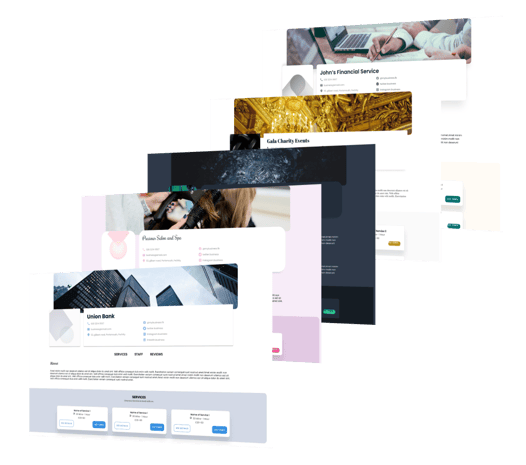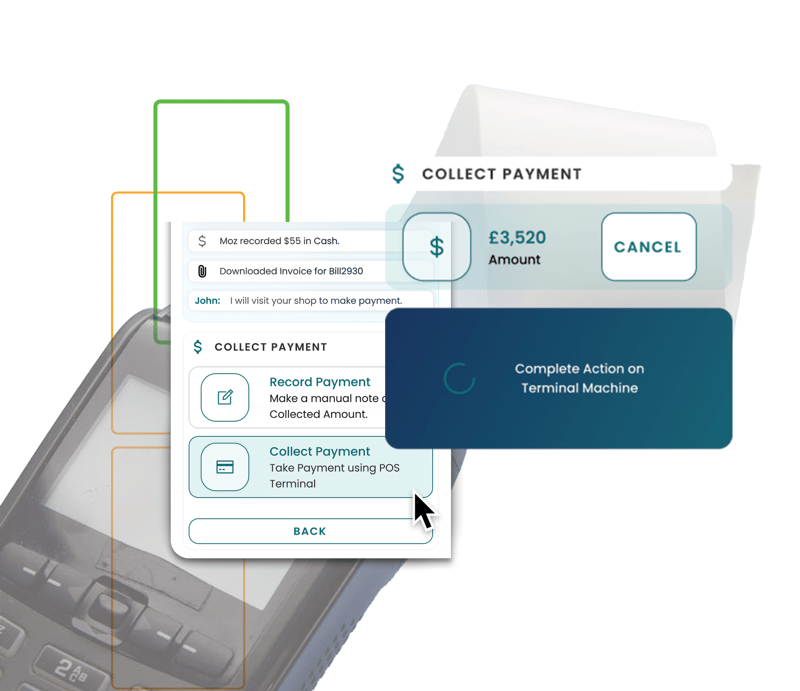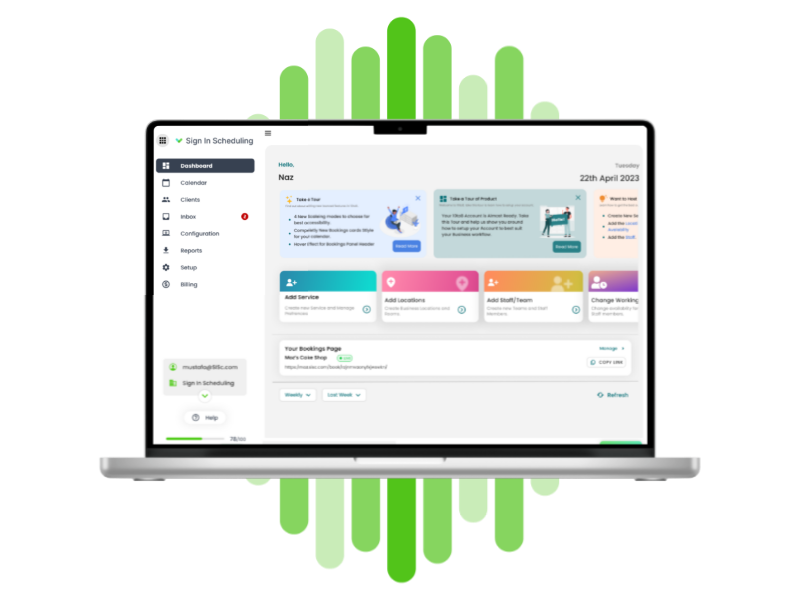A virtual classroom is a great way to connect with students and colleagues from around the globe....
How to optimize your online booking process to drive more revenue with 10to8
In today's digital age, your online booking page unlocks a world of untapped revenue potential for your business. It's not just a mere tool for scheduling appointments; it's a powerful revenue-generating machine that's waiting to be unleashed. Whether you run a business at a p; physical location, or purely online, (or both), it may be trickier to get that page in front of your ideal or existing customers.
But, don’t worry! If you're ready to take your business to new heights and watch your revenue soar, then this blog post is your golden ticket. We're about to reveal the top strategies, tips, and tricks that will transform your 10to8 online booking page from a passive bystander into a revenue-driving powerhouse. Here are the top strategies for optimizing your online booking process to drive revenue to your business.
Table of contents
1. Streamline the booking process
2. Showcase your services and offers
4. Leverage reviews and testimonials
5. Monitor and optimize performance
1. Streamline the booking process
First things first, we need to look at streamlining the actual booking process and ensuring there are no blockers in the way your customers book their appointments that could be putting them off. Here are a few tips to ensure your booking page invites customers to book with you.
Ensure a clean and user-friendly interface
Think of your online booking page as a digital front door of your business. A clean and user-friendly interface is the key to unlocking a seamless booking experience.
It’s important to prioritize both a clutter-free layout (presenting elements in a way that doesn’t overwhelm the user) and a clean interface (sufficient breathing room and whitespace between elements like buttons, menus, and forms, and consistency throughout the page).
This ensures that your customers can quickly find what they need and complete their bookings with ease, ultimately driving more revenue your way.
Use clear and concise instructions to guide customers through the booking process
It’s also important to consider how customers will navigate through the page. By providing step-by-step guidance and straightforward directions, you eliminate any confusion or frustration that may arise during the booking journey.
From selecting desired services to choosing dates and times, make sure your instructions are crystal clear, using simple language and visual cues where possible.

Make sure your booking page is mobile optimized
With most users accessing the internet through their smartphones, you want to provide a seamless and hassle-free experience for mobile users.
Mobile optimization involves designing your booking page to be responsive and adapting to different screen sizes and resolutions. This ensures that your page looks and functions flawlessly on mobile devices, with easy navigation, readable text, and appropriately sized buttons.
By catering to mobile users, you can both tap into a larger audience and boost customer satisfaction.
Make sure your booking page is accessible
Accessibility is just as important as mobile optimization for your online booking page. Your page should allow people with disabilities or impairments (such as visual, hearing, or motor impairments) to access and use it effectively.
Implementing features such as alt text for images, proper color contrast, keyboard navigation support, and captions for videos can make a significant difference in making your booking page inclusive and welcoming to all users.
Of course, this can be pretty complex to set up. But, using a booking page that already complies with WCAG standards, makes this much simpler.
Avoid giving customers form fatigue
Form fatigue occurs when users are overwhelmed or frustrated by lengthy and complex forms, leading to a higher likelihood of abandonment.
To combat this, ask for only essential information. Keep your forms concise, with minimal required fields and clear labeling. Consider implementing smart features like autofill or dropdown menus to make data entry faster and easier.
Remember, less is often more when it comes to collecting customer information.
2. Showcase your services and offers
Once your booking page is as streamlined as possible, think about the best ways to showcase what you can offer your customers. It's crucial to display your services and offers in a way that captivates people. Don't be shy about flaunting what you've got – let your services shine and entice customers to choose your business over others.
Provide detailed service descriptions
When it comes to driving more revenue through your online booking page, providing detailed service descriptions is key. Paint a vivid picture of what customers can expect from each service you offer. Clearly outline the features, benefits, and unique selling points that set your services apart.
However, don’t take this too far. Try not to include a lot of unnecessary information in your description, while keeping it detailed. It’s a pretty fine line, but it can ultimately help drive more people to book with you.
Clearly present pricing options to set customer expectations
Keeping prices concealed is a direct way to drive customers away - it’s hard to consider buying something when you don’t know what it costs!
So, display the cost of each service or package on your online booking page, along with any additional fees or charges. Consider providing a breakdown of what’s included in each option, and, if you offer different tiers or packages, clearly outline the features and benefits of each.
By presenting pricing options clearly, you avoid surprises or confusion, build trust with your customers, and increase the likelihood of converting them into paying clients. Also, be sure to make it clear how they can pay, whether that is online payment, in person payment, or via POS.

Offer attractive packages or bundles to encourage upselling
We briefly mentioned bundles above, but this tactic shouldn’t be underestimated. Creating enticing combinations of your services, products, or experiences can provide lots of value to your customers.
By bundling complementary offerings together, you can increase the average transaction value and enhance the overall customer experience. Highlight the benefits and savings customers can enjoy by opting for these packages.
Whether it's a discounted rate for a combination of services or exclusive perks included in a bundle, make it clear how customers can maximize their value and enjoyment. Show them the value of getting more by investing a little extra, and watch as your revenue grows!
3. Implement effective call-to-action (CTA) strategies
A well-crafted CTA serves as a powerful motivator, guiding customers towards taking the desired action—booking with your business. Here are some tips for writing the perfect CTAs.
Use action-oriented language
Using action-oriented language in your call-to-action (CTA) is a game-changer. Instead of generic phrases like "Submit" or "Click Here," opt for compelling action words that urge customers to take immediate action.
Words like "Book Now," "Get Started," or "Reserve Your Spot" create a sense of urgency and motivate visitors to click that button. Pair these action words with clear instructions to further guide customers through the booking process. So, don't be shy—be bold, and persuasive, and you’ll create a sense of excitement and encourage customers to take that next step.
Experiment with different CTAs
As a business owner, you may well have heard about A/B testing in marketing. Well, this is no different when it comes to how to optimize your online booking page. Don't settle for a single CTA design or wording—instead, test and iterate to find what resonates best with your audience.
Try varying the placement, color, size, and wording of your CTAs to see what drives the most engagement and conversions. For example, you can experiment with different action words, such as "Book Now," "Schedule Your Appointment," or "Unlock Exclusive Offers."
Additionally, consider A/B testing different CTA designs to determine which ones are the most effective in capturing your visitors' attention and driving them to take action. Not only will you gain valuable insight into what works best for your specific audience, but you’ll be able to fine-tune your approach, to maximize your gains.
Utilize urgency and scarcity techniques
This is a powerful strategy. By creating a sense of urgency or scarcity, you can motivate customers to take action without delay.
Incorporate words like "Limited Time Offer," "Exclusive Availability," or "Limited Spots Left" to convey a sense of urgency and scarcity. Additionally, consider incorporating countdown timers, limited stock notifications, or expiration dates to emphasize the time-sensitive nature of the offer further.
By tapping into the fear of missing out (FOMO), you encourage customers to act quickly, knowing that the opportunity may not be available later.
4. Leverage customer reviews and testimonials
When you’ve purchased things online in the past, you’ve probably seen reviews from previous customers who've had a great experience. These reviews can be like gold dust if correctly utilized and serve as social proof, building trust and credibility with potential customers. Here’s how to leverage reviews to boost your booking page.
Implement a system for customers to leave reviews or ratings
Firstly, you’ll need to pick a review platform. There are so many wonderful review platforms out there, but be sure to pick one that works for your business type. These are some of the best review platforms.
By providing an avenue for customers to share their feedback, you not only gather valuable insights but also enhance your business's credibility and reputation. Consider integrating a review or rating system directly on your booking page, making it easy for customers to provide feedback after their experience.
Encourage customers to leave reviews by offering incentives, such as a discount on their next booking or entry into a giveaway. Don’t forget to respond promptly and graciously to both positive and negative reviews, showing that you value customer feedback and are committed to providing an exceptional experience.
Showcase authentic and positive customer testimonials
Once you have a good collection of reviews, you’ll need to display them to potential customers. Display these testimonials prominently on your page, featuring quotes, names, and even profile pictures to add credibility.
Highlight specific aspects of your services that customers rave about, such as exceptional service, outstanding results, or memorable experiences. Authentic testimonials create trust and confidence in potential customers, as they can see real people who have had positive interactions with your business.
You could also consider incorporating video testimonials (like these) or case studies for added impact.
-1.png?width=800&height=420&name=REVIEWS.io%20Social%20Proof%20Image(6)-1.png)
Use social proof to build trust and credibility
And don’t neglect social proof! Displaying the number of satisfied customers, showcasing positive reviews and ratings, or featuring endorsements from industry experts or influencers can all contribute to establishing trust.
If your review platform allows you to create social proof (like the image above) either for your website or social media, don’t be afraid to share it. This can be one of the easiest ways to enhance your credibility.
5. Monitor and optimize performance
Once you’ve put in place all, or a range of, these strategies, you’ll need to keep track of which ones are performing well, and which ones could do with some improvement.
Use analytics tools to measure the number of visitors who complete bookings
Implementing tracking tools like Google Analytics or similar platforms will allow you to gather valuable data on user behavior and conversion rates. These tools provide insights into the number of visitors who navigate through the booking process and complete a reservation.
You can then use this metric to identify areas of improvement based on the conversion rate. For instance, if the conversion rate drops significantly at the payment stage, you may need to streamline the checkout process or offer alternative payment methods. Additionally, if visitors frequently abandon the booking page before completing their reservation, you may need to improve the clarity of your offerings or address any concerns or barriers they might have
By monitoring these metrics, you can identify potential bottlenecks or areas of improvement in your booking flow.
Test different elements of your online booking page
You can A/B test more than just your CTA. Experiment with variations in design, layout, content, or pricing strategies as well, to determine what resonates best with your audience.
By testing different elements, you can gather data on user behavior and preferences, helping you optimize the booking page for higher conversion rates. Test different headlines, button colors, imagery, or even the placement of key elements to see which combinations generate the best results.
Pay attention to metrics such as click-through rates, bounce rates, and conversion rates to evaluate the impact of your tests. Continuous testing and iteration enable you to refine and fine-tune your online booking page, ultimately driving more bookings and higher conversion rates.
Implement changes based on data-driven insights and user feedback
Then, once you’ve measured the analytics and tested out what works and what needs improving, make changes based on what you’ve learned. Additionally, paying attention to customer feedback, reviews, and support inquiries allows you to understand the pain points and preferences of your users.
Armed with these insights, you can make informed decisions and implement changes to enhance the user experience, streamline the booking process, and address any issues or concerns raised by your customers.
Whether it's optimizing the layout, simplifying the navigation, or refining the content, these data-driven changes aim to improve customer satisfaction and increase conversion rates.
Overall…
Leveraging your online booking page to drive more revenue is a multi-faceted endeavor that requires careful attention to various elements.
From ensuring a clean and user-friendly interface to implementing effective call-to-action strategies, every aspect plays a crucial role in enticing customers to book with your business.
By employing these strategies, you can maximize revenue generation, increase customer satisfaction, and propel your business to new heights in the digital landscape.






Blog comments